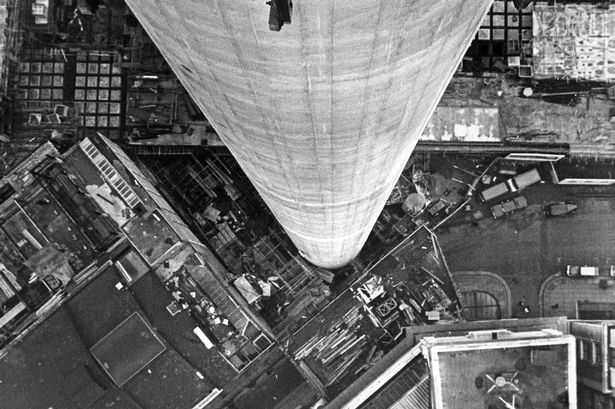Breathtaking photos capture construction of Liverpool landmark
These rare photos have been tucked away in our archives

These breathtaking photos capture the construction of one Liverpool landmark we've come to know so well in the city.
From the days of the iconic revolving restaurant to the structure we know and love today, St Johns Beacon has been a familiar sight in the city centre for decades. The beacon, known locally as the Radio City tower, is one of our city's most famous landmarks and its presence dominates the skyline.
And these photographs, courtesy of our archives Mirrorpix, capture different stages of its construction through the 1960s. From demolition around the site to make way for the Ravenseft development scheme to aerial views from above, these brilliant photos are a fascinating glimpse into our past.
Read More: Liverpool man cutting keys on the markets for almost 60 years
Completed in 1969, the striking building took five years and boasts striking views of the city from dizzying heights of 138 metres. Once the tallest building in Liverpool, beacon's main purpose at first was to act as a ventilation shaft to the shopping centre below.
But the tower became famous later in the 1970s for its signature revolving restaurant. Here are 12 rare photos of the construction of St Johns Beacon that have been tucked away in our archives for years.
For beautiful, historic images from the past have a look at memorylane.co.uk/ and see what you can discover
Join our Liverpool memories and history Facebook group here.
For more nostalgia stories, sign up to our Liverpool Echo newsletter here.
Do these awaken any memories for you? Let us know in the comments section below.
Receive newsletters with the latest news, sport and what's on updates from the Liverpool ECHO by signing up here
-

Work has started on the demolition of Rylands Building in St George's Crescent, Liverpool. The building, over 100 years old, forms a large part of the block which is disappearing to make way for the Ravenseft development scheme, and its removal will be the first major alteration too the familiar Lime Street scene. Pictured, on the roof are demolition workers William Platts and Jack Boyles (right) with site agent Keith Elmore. May 1964
1 of 12
-

Work is progressing on the Ravenseft site for the new market and shops in Liverpool's city centre. Pictured, preparations for the base of the beacon, topped by a restaurant which will be the centre-piece of the project. October 1965
2 of 12
-

Work begins on the pouring of 1200 tons of concrete into the foundations of the 506 foot beacon which will dominate the Ravenseft Development on Lime Street, Liverpool. Pictured, a scene as workmen prepare the thirty foot well for he concrete. February 1966
3 of 12
-
Getting ready to build the beacon. A steel-supported wooden bridge across Houghton Street marks the first stage in preparations for the Beacon tower planned on the Ravenseft Development site in Liverpool City Centre. Preliminary work on the foundations of the Beacon has also been started. August 1966
4 of 12
-
St Johns Beacon under construction. Pictured, the new Ravenseft beacon towers above the Liverpool skyline. January 1967
5 of 12
-
St. Johns Beacon and precinct under construction. February 1967
6 of 12
-
St. Johns Beacon and precinct under construction. February 1967
7 of 12
-
The changing face of Lime Street, Liverpool, with the frontage of Lime Street Station exposed as demolition takes place to make way for new shops. Bottom left are the hoardings round the Ravenseft site. March 1, 1967
8 of 12
-
Construction of St Johns Beacon and Precinct. Pictured relaxing on one of the shutters for the revolving restaurant on the Beacon above St Johns Precinct, Liverpool, are Mr David Jones (left) site engineer, and Mr Jean Brunetot, who is in charge of construction of the shuttering. July 1967
9 of 12
-
St. Johns Beacon and precinct under construction. June 1967
10 of 12
-
St Johns Beacon under construction. Shutters weighing two tons, being placed into position at 370 feet on the St Johns Beacon, as part of the frame which will end up as the revolving restaurant, and will take eighteen of these shutters to form the base. July 16, 1967
11 of 12
-
The construction of St Johns Precinct and Beacon, Liverpool, Merseyside. Circa 1967
12 of 12

